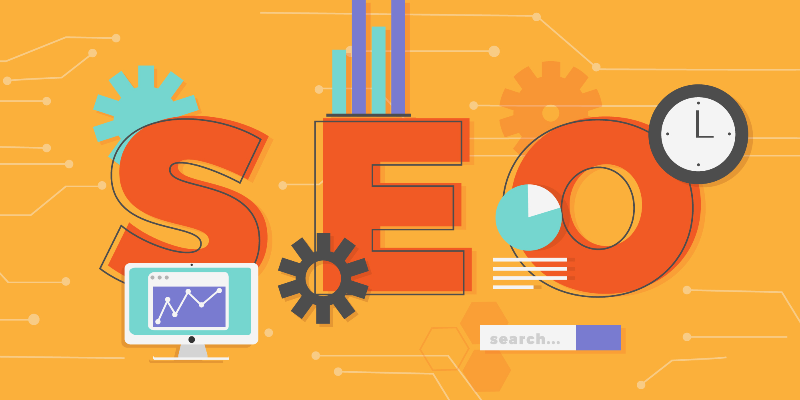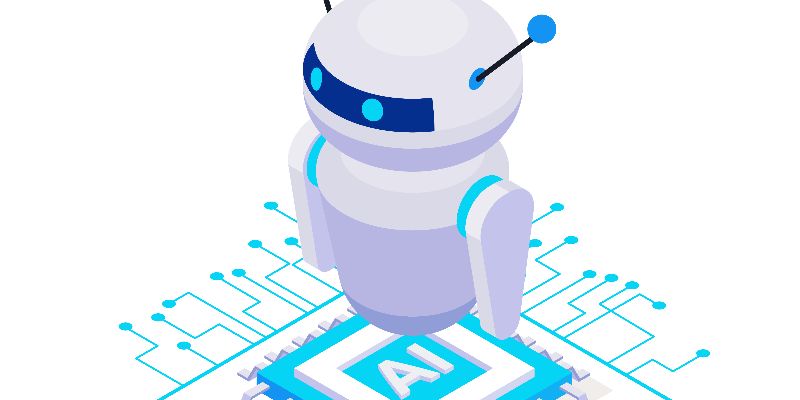

In recent years, search engines have evolved significantly beyond keyword-matching. Now that generative AI has been introduced in search engines, most prominently Google's "AI Mode," the way things are perceived on the Internet is shifting significantly, especially in technical disciplines such as STEM (Science, Technology, Engineering, Mathematics). Whether you make STEM content or not, you need to be familiar with how AI Mode operates, why it alters how things appear, and how you can enhance your content so that it can thrive in this new era.
When we talk about "visibility" in the context of digital publishing, we frequently discuss how easy it is for people to find, recognize, and use the content.
In the topic of what is STEM content, visibility means:
In comparison with popular-audience materials, STEM materials encounter special challenges: Questions are typically more complex, technical, or multi-dimensional.
Readers demand exactness, accuracy, and frequently step-by-step reasoning.
The use of formulas, diagrams, and technical symbols complicates reading and processing information.
The semantic variance is extremely great: a single concept can be depicted in numerous various manners, words, or scenarios.
Simply put, being prominent in STEM implies more than merely appearing in first-page search rankings.
It further implies being comprehended, cited, as well as referenced once more in artificial intelligence responses for complex queries.
It offers Google's new search interface that integrates standard search as well as generative AI capabilities.
It doesn't merely provide a ranked list of links as opposed to attempting to construct answers to users' questions by aggregating as well as summarizing contents across various areas of the web where it then links back to sources.
The Mode for Artificial Intelligence runs on Google's normal search index as well as ranking algorithms.
It uses these but changes the ordering as well as sorts the content in a distinct way.
Since the AI Mode shifts the way individuals consume information, that they click on links versus reading abstracted answers, the metrics and strategies for visibility shift too.

When we optimize STEM content for AI for visibility, we don't merely mean that it provides all content with more views.
Instead, it alters what content is visible in what ways and normal strategies to AI Mode SEO strategies.
Here are the principal changes:
Under traditional SEO, being the #1 listing for a keyword is the biggest visibility payoff.
Under AI Mode SEO strategies, however, getting mentioned in a synthesized response is more important than brute ranking.
The AI chooses sources that most directly answer the question, and then weaves them together into the answer.
Thus, your content's authority, clarity, structure, and domain reputation have more of an impact on getting included in AI Mode output.
Google has allegedly tweaked AI Mode to work best on STEM questions — interpreting equations, supporting nested logic, and coping with technical parlance better.
That translates to well-formatted, unambiguous content being more likely to pass the filtering and summarization.
Messy, ambiguous, or poorly formatted content stands a less chance of being selected.
AI Mode therefore increases the standard for technical writing clarity.
Because AI Mode allows follow-up questions, a user could ask successive, nested questions.
Your content can be exposed not just in the first answer, but in follow-ups too.
A user may, for instance, first ask "What is the divergence theorem?" and then ask a follow-up question such as "Give me an example in electromagnetism."
If your content includes both basic theory and worked examples, you stand to get cited more than once.
Because AI Mode can accept or interpret images or diagrams, having high-quality visuals and properly labeled diagrams can help your content be more accessible to AI.
For example, if a user uploads a circuit diagram and asks how it works, then the AI might map to your content that explains the same circuit.
This integration of visual and textual representations enhances your visibility in queries involving diagrams, schematics, or formulae.
In STEM, frequently a topic may be queried in numerous forms.
AI Mode's generative capabilities enable it to combine fragments from differently worded sources.
This results in your content, even without using the specific phrasing—being surfaced when your descriptions are conceptually equivalent.
Essentially, you achieve indirect visibility through numerous query variations, reflecting beyond your target terms.
Overall, Google AI Mode changes visibility from rank alone to boosted and reused by AI, particularly for technically demanding content.
Why should any SEO Agency and content creators in STEM worry so much about AI Mode and this new visibility model?
Most users will accept the answer that is generated by AI without clicking on more, where AI Mode SEO strategies gains importance.
If your content isn't included in those summaries, users never come to your site, missing out on possible traffic, engagement, or conversion.
In the AI age, being within the summary might be more valuable than being the link.
AI Mode discourages click-throughs since answers are provided directly.
Therefore even top-ranked pages can experience less organic click-through traffic.
The risk: your content is rendered invisible in reality, though still technically indexed.
Hence, when you optimize STEM content for AI the risks may reduce.
If your institution, blog, or domain is frequently referenced in AI responses, you become an expert in your niche.
For institutions, researchers, or educators in STEM fields, being referred to by AI is much like being endorsed by an invisible tutor; it builds brand awareness and credibility.
People nowadays must know What is STEM content, and how competitive it is.
Lots of producers are talking about the same things, textbooks, formulas, and methods.
If your material is less AI-averse, more readable, organized, expert-like you have an advantage in getting selected by AI Mode over the rest.
Search is evolving toward generative, assistant-style experiences.
Adapting early to this model positions your content and your brand for the future.
Ignoring it risks being left behind as AI-first interfaces dominate.
Not all must shift their strategy overnight and do AI Mode SEO strategies, but the following players in the STEM content marketplace should be aware:
If your project is about creating or curating STEM content for any group of people (students, researchers, professionals), you must optimize STEM content for AI, and it’s becoming more necessary than optional.
Here are some practical tactics and how to optimize STEM content for AI, to make your STEM material more seen and quotable in Google's AI Mode.
In every topic or section, start with an explicit, brief "answer summary" (1–2 sentences) that answers a typical question directly.
AI Mode tends to feature these as summary snippets.
Frame your headings (H2, H3) as explicit questions, e.g. “What is the Laplace transform?” or “How do you apply the divergence theorem in electromagnetism?”
This helps AI map user intent to your content.
Have a master "pillar" page on a general STEM topic, and link out to more specific subtopics (e.g., proofs, examples, applications).
This indicates topical depth and facilitates AI navigation among related content.
Including structured data (JSON‑LD) such as FAQ or HowTo schema aids Google and AI Mode in comprehending your content's organization and extracting it more consistently.
Use bullet points, steps with numbers, tables, and consistent layout.
Avoid long meandering paragraphs.
Break complicated technical material into manageable, coherent bits.
STEM disciplines change.
Regularly check over your content, add new discoveries, freshen up examples, and verify accuracy.
Freshness helps build perceived authority.
Ensure your pages are in sitemaps, not blocked by robots.txt, and well integrated through internal links.
If Google can't index you, AI will not be able to quote you.
AI Mode likes content that seems credible and authoritative.
When respected institutions, educational sites, or academic pages link to you, the trustworthiness of your content goes up.
Use Google Search Console and other analytics tools to monitor impressions, clicks, and query patterns associated with AI Mode.
Look particularly for impression spikes on STEM queries.
Think outside traditional SEO.
Organize your content around how generative AI will utilize your content: organize your content into atomic, clearly explained "knowledge nuggets" that are easily drawn upon and recombined by AI.

Even as this paradigm opens up possibilities, it also creates some danger and complications.
AI Mode is in development.
Eligibility criteria for inclusion may change.
Today's winner may not be tomorrow's one.
Since AI-written abstracts may meet user needs, fewer will click to your original page.
This frustrates conversion, brand building, or more in-depth involvement.
Google has not made a transparent algorithm for AI Mode choice available.
You have to try, monitor, and repeat.
Optimizing existing content, making simple graphics, rearranging, inserting schema, all this takes effort and time.
Some less important content may not be worth the expense.
Universities, major publisher platforms, or authoritative knowledge centers might prevail over AI Mode citations based on domain authority, and it becomes more difficult for new entrants to be chosen.
The rise of Google’s AI Mode is reshaping on how to optimize STEM content for AI and how creators gain visibility. In this new framework, being highly ranked is no longer enough. To get found by learners, researchers, and curious minds, your content must be included, cited, and recombined within AI-generated search experiences.
For STEM content creators and institutions, the shift of AI Mode SEO strategies is both a challenge and an opportunity. If you adapt, by writing clear, structured, semantically rich content, using schema, integrating visuals, and building authority, you can position your work to be surfaced by AI Mode. In doing so, you not only retain relevance, but also gain new visibility to audiences who increasingly rely on generative AI for learning.
Connect with Bud, expert SEO agency in Chennai to optimize your SEO content and gain visibility with winning strategies.